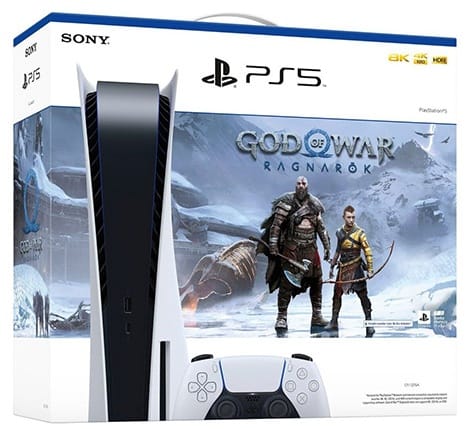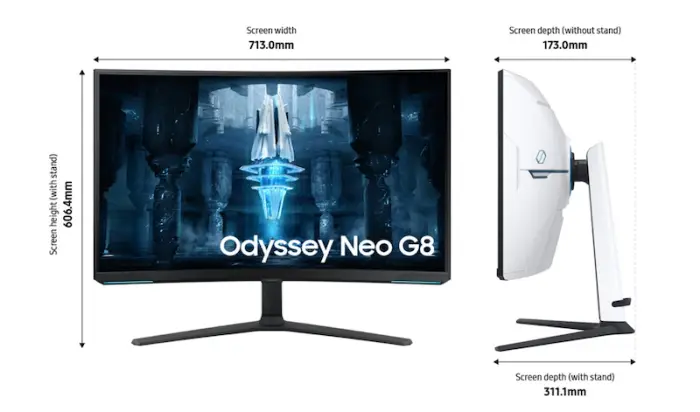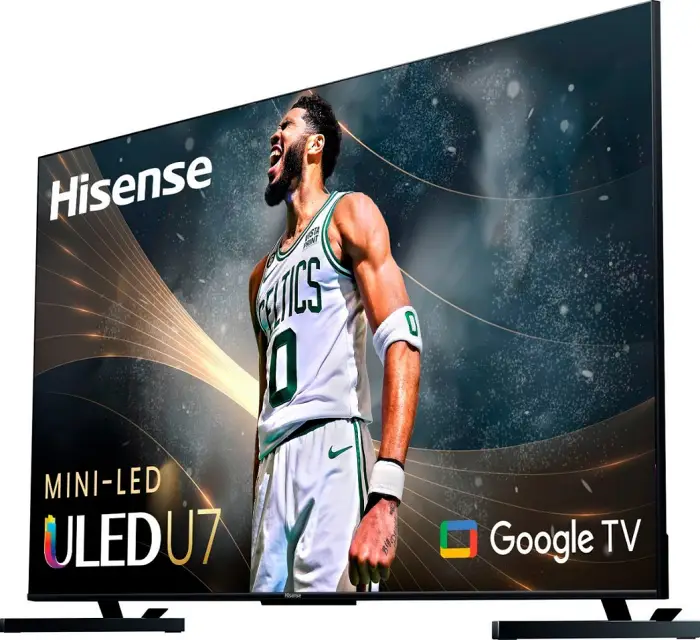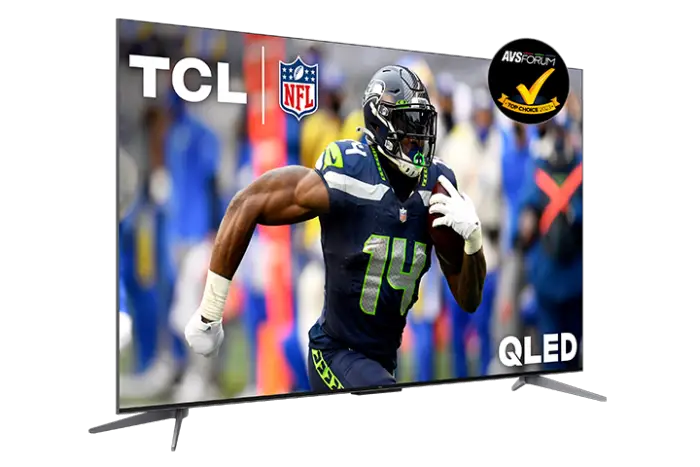The Ultimate Gaming TV Guide for Console Gamers (Especially PS5)
You’re in the final moments of an intense multiplayer battle royale. Your heart is racing, your palms are sweaty, and every muscle is tensed with focus. You spot the last enemy trying to flank you from behind cover. As you quickly spin your character around to line up the perfect headshot, the image stutters and lags – your outdated TV can’t keep up with the fast-paced action.
In that split-second delay, your opponent gets the drop on you.
Game over.
If this scenario sounds all too familiar, it’s time to invest in a gaming TV that can truly complement your elite gaming skills. A responsive, high-performance display is crucial for an uncompromised gaming experience.
We discussed about Gaming Console VS Gaming PC earlier. You will need a TV for your PS5.
This guide dives into the top features of gaming TVs, helping you choose the ideal display for epic future adventures. We’ll break down key considerations like picture quality, refresh rates, and must-have features for a smooth, great gaming experience. By the end, you’ll be a gaming TV pro, ready to conquer virtual worlds with stunning visuals and responsive gameplay.
Ultimate Gaming TV Guide
Essential Features of Gaming TVs for Console Gamers
Input Lag
This measures the time it takes for your TV to register and display your controller inputs on the screen. Even a split-second delay can be the difference between landing that game-winning shot or being utterly destroyed. Look for TVs advertising low input lag optimized for gaming.
Refresh Rate
A higher one, like a 120Hz refresh rate with Variable Refresh Rate (VRR) support, ensures smooth motion handling without annoying stuttering or tearing during fast-paced scenes. Say goodbye to choppy visuals and hello to liquid-smooth gaming.
Resolution To Consider for the Best Gaming Experience
1080p (Full HD)
With a resolution of 1920 x 1080 pixels, Full HD TVs were the standard for many years. While still offering good picture quality, they may not be ideal for very large screens where viewers might notice pixelation (individual pixels becoming visible). However, they are often more affordable than 4K options.
4K Ultra HD (UHD)
Currently the most popular option, 4K TVs boast a resolution of 3840 x 2160 pixels. This translates to a sharper image with finer details compared to Full HD. Text appears crisper, and overall, the viewing experience is more immersive, especially on larger screens.
8K UHD
The cutting edge of TV resolution, 8K TVs offer a whopping 7680 x 4320 pixels. This delivers incredibly sharp and detailed images, but there’s not a lot of 8K content available yet, and 8K TVs are significantly more expensive than 4K options.
The latest PS5 and Xbox Series X consoles are designed for 4K gaming. A 4K TV with its increased pixel density means sharper image clarity and fine detail, allowing you to spot even the smallest movement in your game world’s vast environments.
HDR
HDR, which stands for High Dynamic Range, greatly expands the range of colors and contrast your TV can display. HDR takes your gaming visuals to cinematic levels, with richer blacks, brighter highlights, and a wider color gamut for a truly vibrant and immersive experience. Giving you the best image quality.
Imagine a box of crayons
- Standard TVs (SDR – Standard Dynamic Range): These are like having a limited box of crayons. They can display a good range of colors, but brighter highlights and deeper shadows often get lost, resulting in a flat and less realistic image.
- HDR TVs: These are like having a giant box of crayons with much more variety! HDR allows TVs to display a wider range of colors, brighter whites, and deeper blacks. This creates a more vibrant, realistic, and immersive viewing experience.
Benefits of HDR for PS5 Gaming:
- Stunning visuals: Games come alive with a wider color palette, showcasing vibrant explosions, lush landscapes, and detailed textures in a way that’s closer to what the game developers envisioned.
- Enhanced realism: Dark scenes with subtle lighting effects, like a moonlit forest, will have more depth and detail. Bright scenes, like a sunlit desert, will have realistic highlights without losing detail in shadows. This creates a more immersive and true-to-life gaming experience.
Panel Technologies Explained – OLED TV, QLED 4K
When it comes to TV panel technologies, there are a few main options: LED, QLED, and OLED.
LED (Light-Emitting Diode)
This is a broad category encompassing most modern TVs. LEDs themselves don’t create the image but instead act as a backlight for an LCD (Liquid Crystal Display) panel.
OLED (Organic Light-Emitting Diode)
These TVs take a different approach. Each pixel in an OLED panel lights up individually, resulting in an excellent contrast ratio (great for dark scenes) and very fast response times (ideal for reducing motion blur). However, it is more expensive than LED, susceptible to burn-in (static images can leave faint imprints), and generally not as bright as LED TVs.
OLED is considered the premium choice – each pixel emits its light, allowing for perfect blacks and infinite contrast ratios.
QLED (Quantum Dot LED) From Samsung
Developed by Samsung, QLED is a type of LED TV that utilizes a layer of quantum dots to enhance color reproduction and brightness. It offers a wider color gamut than standard LED and good brightness levels. However, the black levels aren’t quite as good as OLED and can be pricier than standard LED TVs.
Although it started on Samsung TVs, it does not mean other brands are lesser.
Mini-Led
Mini-LED is a TV display tech that combines aspects of LED and OLED. Like LED TVs, it uses a backlight to illuminate an LCD panel. But unlike regular LEDs, mini-LED uses much smaller ones. This allows for cramming more LEDs in, creating more dimming zones for better control over brightness in different screen areas. The result? A significant improvement over standard LED TVs with better contrast, deeper blacks, and richer colors. While it doesn’t quite reach the perfect blacks and viewing angles of OLED, Mini-LED offers a sweet spot for those seeking a substantial upgrade without the typical OLED price tag.
Other Technologies
There are variations on these themes, like LG’s NanoCell which improves color in LED TVs. New technologies like QD-OLED (combining quantum dots with OLED) are also emerging, promising the best of both worlds.
So, Which Type of Panel To Choose For Your The Best Gaming TV?
For gaming on a PS5, OLED offers the absolute best picture quality, with perfect blacks, excellent contrast ratio, wide viewing angles, and super-fast response times. This translates to stunning visuals, especially in dark scenes, and smooth, blur-free motion during intense gameplay. It’s the ideal choice for gamers who prioritize top-notch image quality.
However, there are some drawbacks to consider for PS5 use:
- Burn-in risk: OLED TVs are susceptible to burn-in, where static elements like the PS5 menu bar can leave faint imprints on the screen if displayed for extended periods. This is less of a concern for varied content viewing, but for gamers who play a lot of titles with static menus or HUD elements, it’s a potential issue.
- Price: OLED TVs are generally more expensive than other options.
A New Contender: Mini-LED TVs
Mini-LED TVs offer a compelling alternative for gamers seeking a balance between picture quality and price. This technology combines elements of LED and OLED, delivering improved brightness, deeper blacks, and richer colors compared to traditional LED TVs. While it doesn’t quite match the perfect blacks of OLED, Mini-LED offers excellent contrast and vibrant visuals, making it a strong contender for PS5 gaming, especially for those concerned about burn-in risk.
LED vs QLED
LED TV technology, once a leader in the market, is now taking a backseat due to superior picture quality offered by OLED and Mini-LED. For a balance of price, performance, and brightness, LED TVs are a solid choice. Keep in mind response times and black levels may not be ideal for all games.
QLED offers a good balance between color and brightness, but similar to LED TVs, may not be the best for dark room gaming due to limitations in black levels.
PS5 TV Specific Considerations For Best Gaming Performance
HDMI 2.1
HDMI 2.1 is a game-changer for PS5 gamers, unlocking the console’s full graphical potential. Here’s how it elevates your gameplay:
Bandwidth Boost
Compared to the older HDMI 2.0 standard, HDMI 2.1 boasts a massive leap in bandwidth – from 18Gbps to a whopping 48Gbps. This translates to the ability to handle much higher resolutions and refresh rates.
4K @ 120fps Bliss
The PS5 can render some games at a stunning 4K resolution with a silky smooth 120 frames per second (fps) refresh rate. However, you need an HDMI 2.1-equipped TV to enjoy this incredible level of detail and fluidity. At 120fps, fast-paced action becomes even more immersive and responsive, giving you a competitive edge.
Auto Low Latency Mode (ALLM)
This automatically optimizes your TV settings for the lowest possible input lag, minimizing the delay between your controller input and the on-screen response.
eARC (enhanced Audio Return Channel)
This allows for high-quality audio formats like Dolby Atmos to be transmitted back from your TV to a compatible soundbar or receiver through the single HDMI cable.
VRR Compatibility
VRR is another exciting feature supported by HDMI 2.1. It eliminates screen tearing (where the image appears to be ripped horizontally) and stuttering (uneven frame delivery) that can occur when the frame rate from the PS5 doesn’t perfectly match the refresh rate of your TV. VRR ensures a tear-free, buttery-smooth gaming experience.
Additional Factors When Considering a TV For Video Games
Screen Size
Bigger is often better for maximum immersion, but find the right balance between size and viewing distance. A TV too large for your room can diminish visual quality.
Price
Gaming TVs can range from a few hundred to several thousand dollars. Identify the essential features and set a reasonable budget to narrow your options.
Other Features
Look for gaming-specific modes like a dedicated ‘Game Mode‘ to prioritize low input lag, as well as image-enhancing features like black equalizers.
Gaming TV Calibration Tips
To get the most out of your shiny new gaming TV, proper display calibration is crucial. Use the TV’s picture modes to enable a low-latency ‘Game Mode’ for minimal input lag. Disable any motion smoothing or image processing that can introduce lag. Adjust brightness, contrast, color, and even the TV’s RGB output for balanced, accurate image quality. Consider using calibration discs or software to precisely tune your TV’s display for gaming.
Cable Guidance
With 4K gaming at higher frame rates, you’ll need cables that can handle the bandwidth. For 4K/120Hz and 8K, HDMI 2.1 ultra high-speed cables are recommended to avoid signal bottlenecks. For lower resolutions up to 4K/60Hz, a quality High-Speed HDMI 2.0 cable should suffice.
Future-Proofing your Gaming TV
To truly future-proof your TV purchase, look for the latest display technologies and standards. Features like HDMI 2.1, 120Hz+ refresh rates, VRR support, and cutting-edge image processors will help ensure your TV can handle the advancing graphics of the PS5 and beyond for years to come.
Optimize for Other Consoles/PC
While this guide is focused on the PS5, many of these recommendations apply if you game on other gaming consoles and platforms too. For Xbox Series X, look for the same 4K, HDR, and VRR gaming features. For the Nintendo Switch, lower input lag and decent HDR performance are ideal even at 1080p resolution.
And for gaming PC, prioritize high refresh rates up to 120Hz or even 240Hz on monitors, with low response times. However, if you are playing on a PC, a gaming monitor would be the better choice for the best performance and immersive gaming experience, especially the curved SAMSUNG 32″ Odyssey Neo G8 4K UHD monitor. Check that out for PC gaming.
Ready To Get The Best TVs for Gaming?
As mentioned above, if you are gaming on a PS5, OLED offers the absolute best 4K TV.
Elevating your gaming setup with the right TV can truly transform your experience from just playing games to being fully immersed in your favorite virtual worlds. Don’t let outdated display tech hold you back – upgrade to a high-performance display optimized for gaming with fluid motion handling, vibrant HDR visuals, low input lag, and next-gen connectivity. With so many brilliant options for different budgets, there’s a perfect TV for 4K gaming out there for you. Take your skills to new heights and embrace the ultimate gaming nirvana you deserve.
If you’re on a tight budget and can’t afford a top-of-the-line TV with all the bells and whistles, there are a few key specs and features that should be prioritized for the best gaming experience:
- Low Input Lag Input lag is likely the single most important factor for gaming. Even budget TVs advertised as ‘Game Mode’ often still have higher input lag that can hamper response times in fast-paced games. Look for input lag measurements under 20ms ideally.
- At least 60Hz Refresh Rate. Gaming at 120Hz is great for reducing stuttering and gives you a smooth gaming experience, a basic 60Hz refresh rate is the minimum you’d want for smooth gaming these days. Anything below 60Hz will likely have noticeable choppiness and lag during motion.
- 4K Resolution Next-gen consoles like the PS5 and Xbox Series X are built around 4K gaming. Even if you can’t afford a huge screen size, springing for a TV that supports 4K will provide sharper image clarity over 1080p and better future-proofing.
- Decent HDR. HDR can vastly improve the image quality and pop of games by expanding contrast and color range. Look for basic HDR10 support at a minimum, even if you can’t get more advanced HDR formats like Dolby Vision.
- Low Response Time While not as crucial as input lag, a faster pixel response time under 10ms will reduce blurring and ghosting with fast motion clarity. This spec tends to be better on higher-end sets.
If you can secure those 4-5 core specifications – low input lag, at least 60Hz, 4K res, basic HDR, and a decent response time – you’ll be getting a reasonably future-proofed and responsive gaming experience without breaking the bank.
Other great-to-have features like VRR, HDMI 2.1, 120Hz+ refresh rates, and more premium display techs can always be added later when your budget allows. But focusing on those 4-5 priorities first will ensure a solid gaming foundation even on an affordable 4K TV.
And don’t worry, all the new TVs out there come with Google TV or the respective brand Smart TV platform. You can use it more than just for gaming.
Our Best Budget TV for Gaming Picks
Whether you want the best budget 4K TV, the best cheap TV on the market, the best buy, or just any great TV for an excellent gaming experience that will not hurt your wallet, we have a few that you should consider:
Hisense 65-Inch Class U7 Series Mini-LED 4K UHD Google Smart TV
The Hisense U7K Mini-LED delivers fantastic value. It boasts features like VRR and Dolby Vision Gaming, perfect for next-gen consoles like the PlayStation 5. Plus, a sleek design with minimal bezels keeps you focused on the action. Get it from Amazon.
TCL 65-Inch Q7 QLED 4K Smart Google TV
You can get TCL at a much lower price from Hisense if you are looking for a much cheaper PS5 TV. While the TCL Q7/Q750G is a contender, the Hisense U7K edges it out. The Hisense offers smoother visuals during fast-paced scenes (thanks to its consistent response time) and delivers richer, more vibrant colors. Get it from Amazon.



